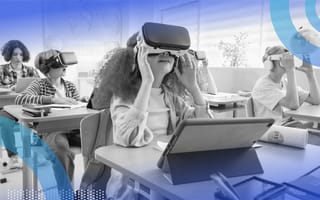
Tech in Education: Balancing Digital Tools with Traditional Learning Methods
Technology plays a crucial role in modern education, offering both advantages and challenges. Understanding how to effectively integrate tech tools while maintaining essential learning outcomes is key to successful educational outcomes.

Students wearing VR headsets
Key Benefits of Educational Technology:
- Supports diverse learning needs and styles
- Enhances learning speed through tools like VR
- Enables personalized learning programs
- Facilitates student collaboration
- Increases student engagement and autonomy
- Helps solve real-world problems
Research-Backed Considerations:
- Students taking handwritten notes show better conceptual understanding compared to laptop note-takers
- AI usage may reduce critical thinking abilities
- Increased screen time correlates with decreased social skills
- VR-based learning demonstrates superior results to traditional methods
- Technology particularly benefits students with special needs
Effective Implementation Strategies:
- Career-Focused Application
- Align tech tools with workforce development
- Focus on jobs requiring both technical and interpersonal skills
- Include opportunities for mathematical and logical problem-solving
- Integrate professional communication skills
- Balanced Approach
- Combine digital and analog learning methods
- Design activities requiring teamwork and participation
- Help students identify appropriate tech use cases
- Connect learning to daily experiences
- Project-Based Learning
- Encourage student-led problem-solving
- Incorporate hands-on activities
- Foster group collaboration
- Enable creative technology application
Best Practices for Integration:
- Frame learning activities to promote teamwork
- Create opportunities for active participation
- Support student autonomy and competence
- Maintain focus on interpersonal connections
- Design curriculum incorporating both technical and analog skills
Future Considerations:
- Invest in teacher training for technology integration
- Continue developing innovative curriculum approaches
- Balance technology use with traditional learning methods
- Focus on preparing students for future workforce demands
The key to successful educational technology implementation lies not in choosing between digital and analog methods, but in determining the most effective combination of both approaches to enhance learning outcomes and prepare students for future success.
Related Articles

The Complete Guide: Adding a Bootcamp to Your Resume in 2025
